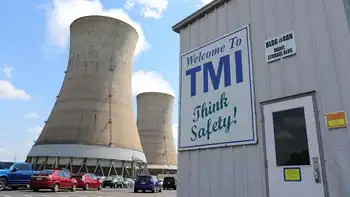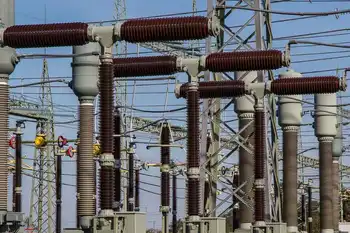Largest solar panel plant rises in Florida
For nearly a year, construction workers and engineers in this sleepy Florida town of citrus trees and cattle farms have been building the nation's largest solar panel energy plant. Testing will soon be complete, and the facility will begin directly converting sunlight into energy, giving Florida a momentary spot in the solar energy limelight.
The Desoto Next Generation Solar Energy Center will power a small fraction of Florida Power & Light's 4-million plus customer base; nevertheless, at 25 megawatts, it will generate nearly twice as much energy as the second-largest photovoltaic facility in the U.S.
The White House said President Barack Obama is scheduled to visit the facility October 27, when it officially goes online and begins producing power for the electric grid.
As demand grows and more states create mandates requiring a certain percentage of their energy come from renewable sources, the size of the plants is increasing. The southwest Florida facility will soon be eclipsed by larger projects announced in Nevada and California.
"We took a chance at it and it worked out," said Bove, construction manager at the project, set on about 180 acres of land 80 miles southeast of Tampa. "There's a lot of backyard projects, there's a lot of rooftop projects, post offices and stores. Really this is one of the first times where we've taken a technology and upsized it."
Despite its nickname, the Sunshine State hasn't been at the forefront of solar power. Less than 4 percent of Florida's energy has come from renewable sources in recent years. And unlike California and many other states, Florida lawmakers haven't agreed to setting clean energy quotas for electric companies to reach in the years ahead.
California, New Jersey and Colorado have led the country in installing photovoltaic systems; now Florida is set to jump closer to the top with the nation's largest plant yet.
The Desoto facility and two other solar projects Florida Power & Light is spearheading will generate 110 megawatts of power, cutting greenhouse gas emissions by more than 3.5 million tons. Combined, that's the equivalent of taking 25,000 cars off the road each year, according to figures cited by the company.
The investment isn't cheap: The Desoto project cost $150 million to build and the power it supplies to some 3,000 homes and businesses will represent just a sliver of the 4 million-plus accounts served by the state's largest electric utility.
But there are some economic benefits: It created 400 jobs for draftsmen, carpenters and others whose work dried up as the southwest Florida housing boom came to a closure and the recession set in. Once running, it will require few full-time employees.
Mike Taylor, director of research and education at the nonprofit Solar Electric Power Association in Washington, said the project puts Florida "on the map."
"It's currently the largest," Taylor said of the Desoto photovoltaic plant. "But it certainly won't be the last."
There are two means of producing electricity from the sun: photovoltaic cells that directly convert sunlight; and thermal power, which uses mirrors to heat fluid and produce steam to run a turbine power generator.
Taylor said a one- or two-megawatt project was considered large not long ago. The size has slowly increased each year.
Overall, the United States still trails other nations in building photovoltaic plants.
Spain and Germany have made larger per capita commitments to solar power because of aggressive government policies, said Stephen Smith, executive director of the Southern Alliance for Clean Energy. And China has announced plans to pay up to 50 percent of the price of solar power systems of more than 500 megawatts.
"If we don't get our market right and send the right market signals and really support growing this technology, we will be buying solar panels from other countries," Smith said.
In April, Arizona-based manufacturer First Solar Inc. announced plans to build a 48-megawatt plant in Nevada, producing power for about 30,000 homes. Even that pales compared to recently announced plans for a 2 gigawatt facility in China. First Solar has initial approval to build it.
Related News

Three Mile Island at center of energy debate: Let struggling nuclear plants close or save them
THREE MILE ISLAND - Three Mile Island is at the center of a new conversation about the future of nuclear energy in the United States nearly 40 years after a partial meltdown at the Central Pennsylvania plant sparked a national debate about the safety of nuclear power.
The site is slated to close in just two years unless Pennsylvania or a regional power transmission operator delivers some form of financial relief, says Exelon, the Chicago-based power company that operates the plant.
That has drawn the Keystone State into a growing debate: whether to let struggling nuclear plants shut down if they cannot…




